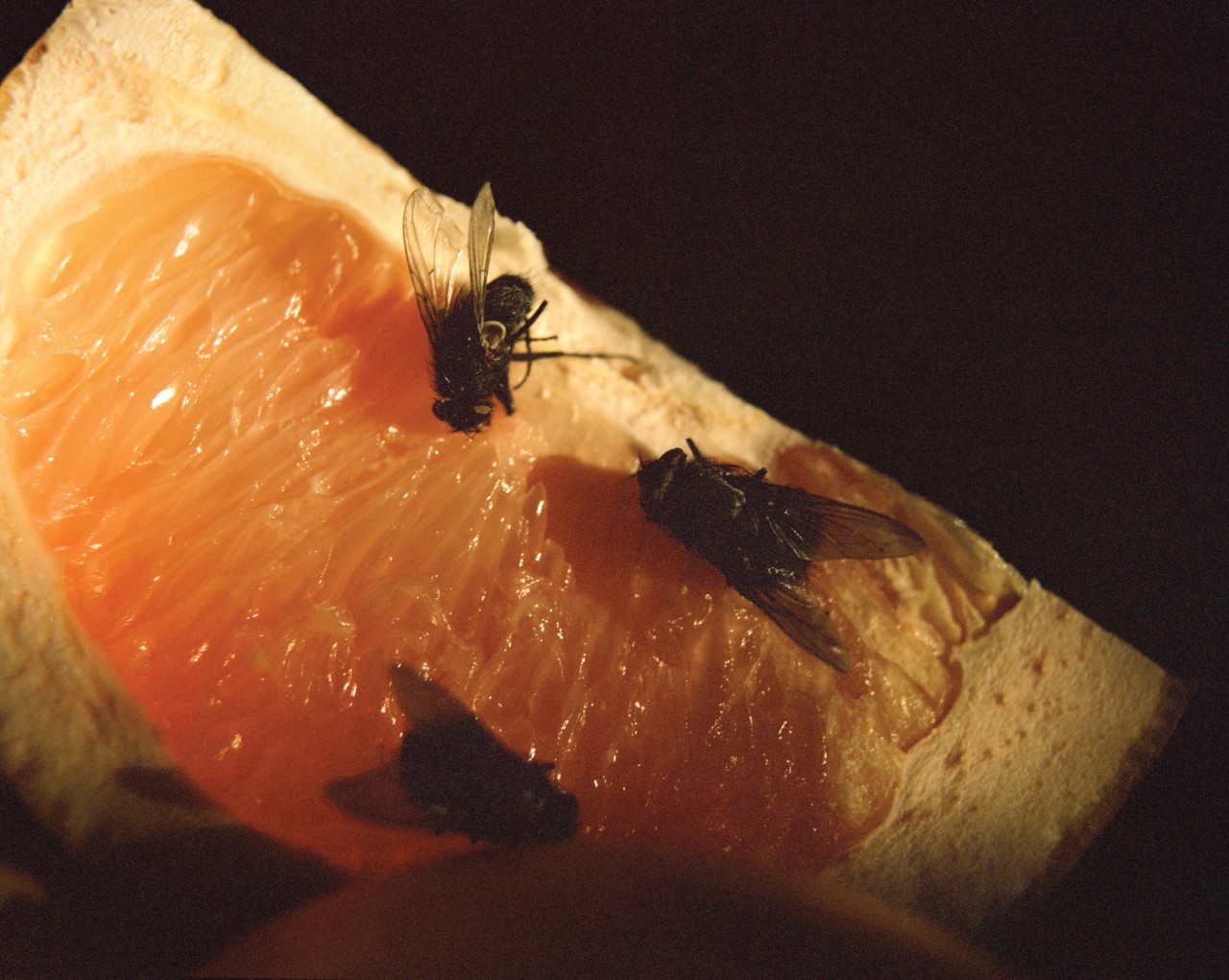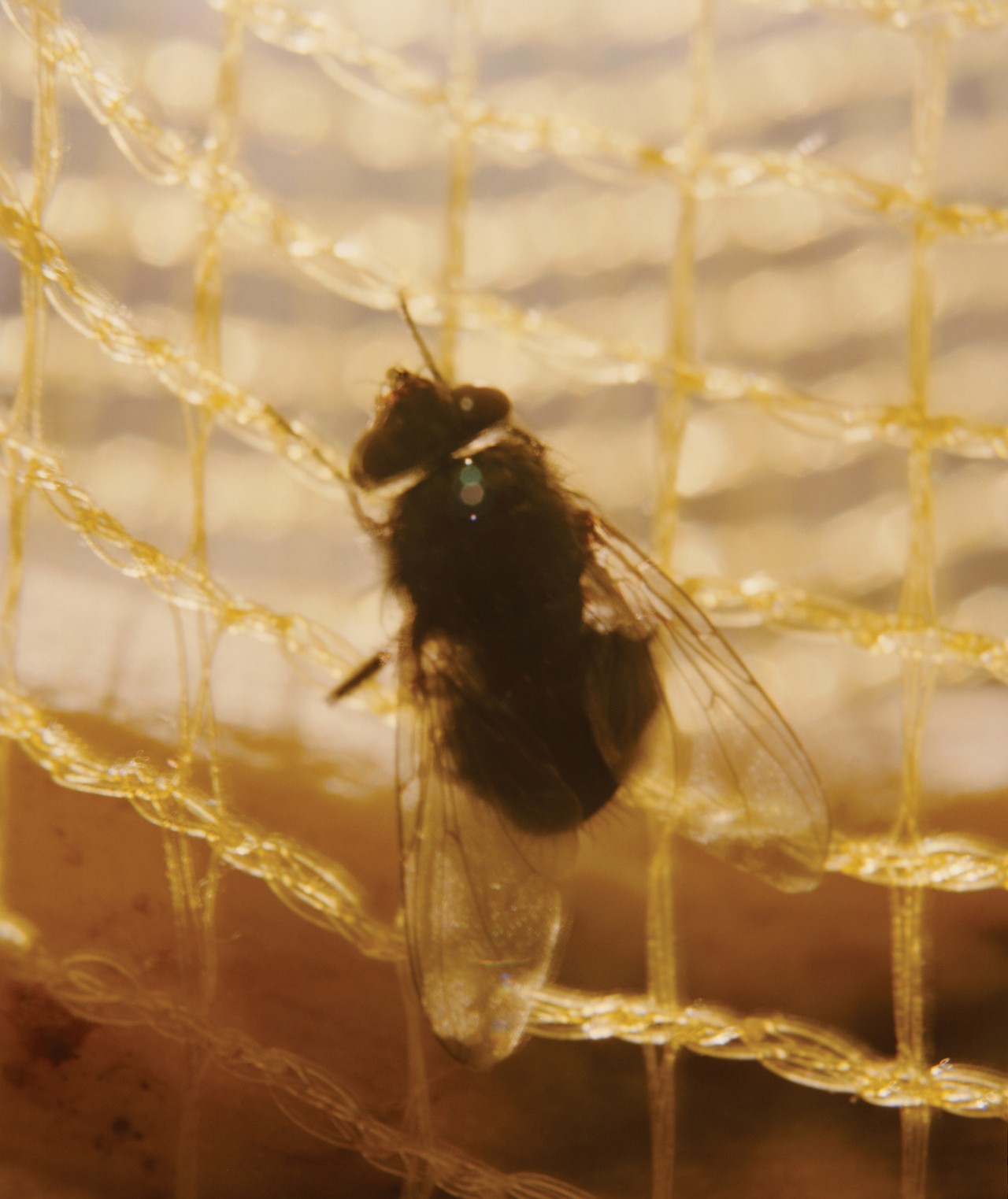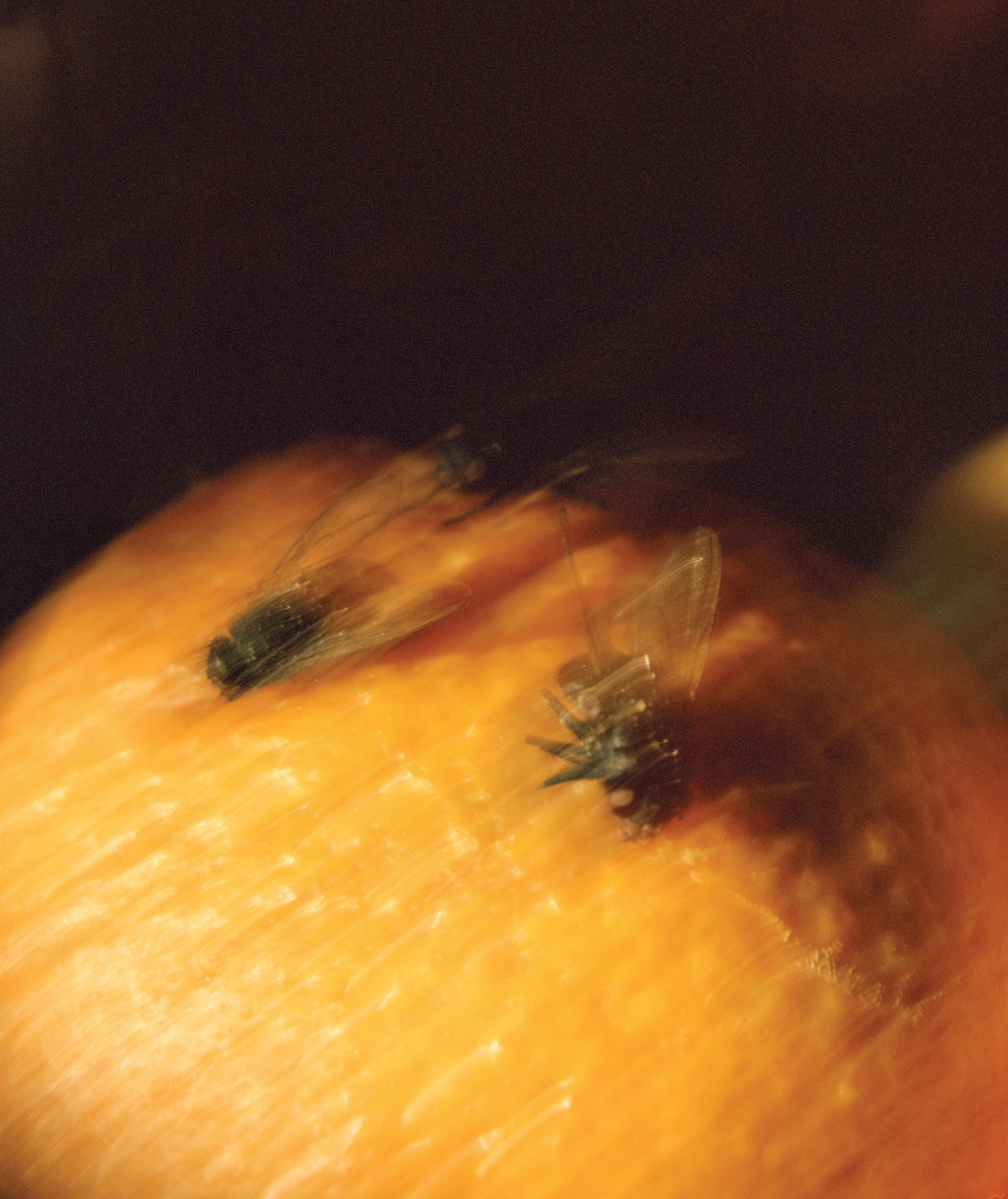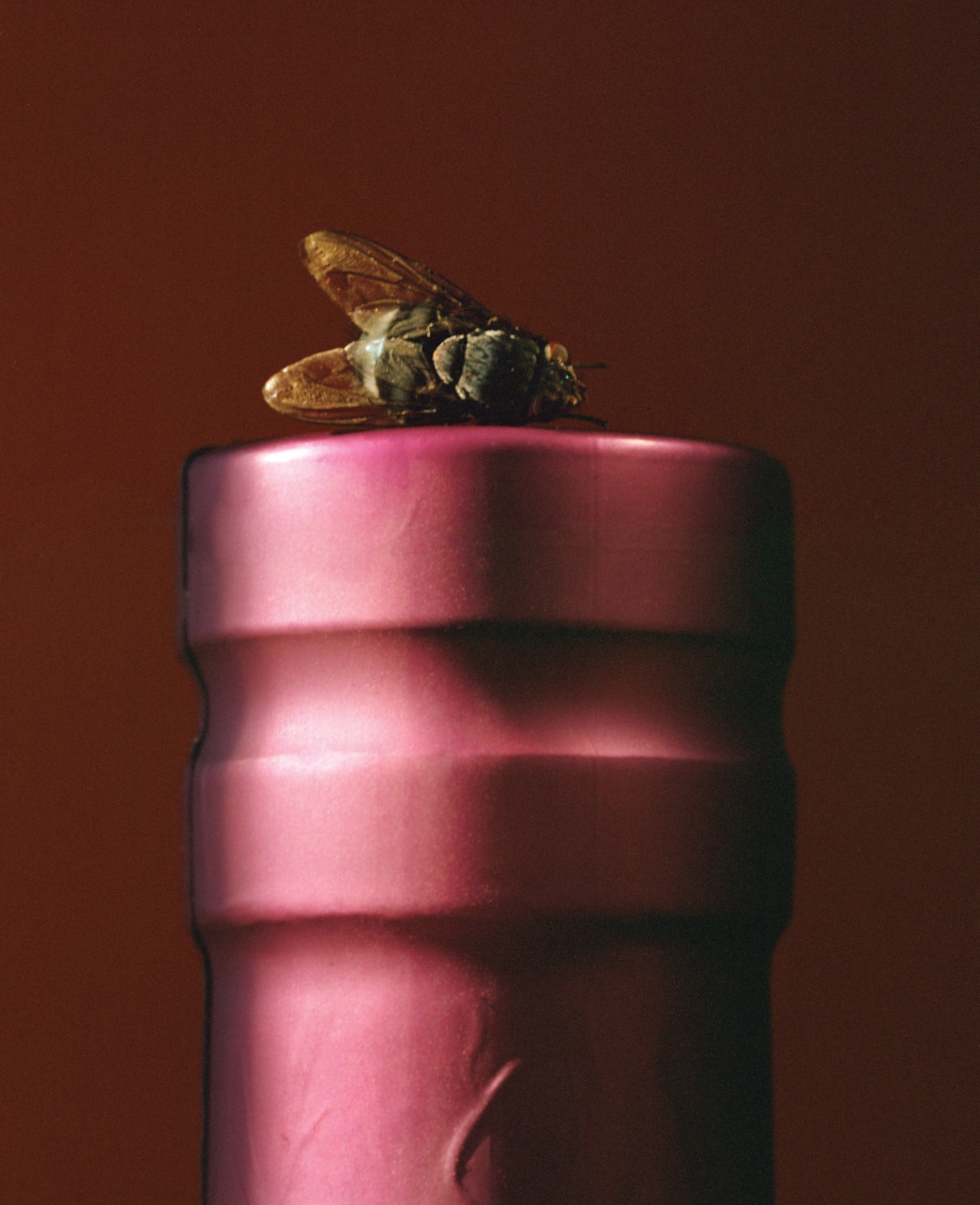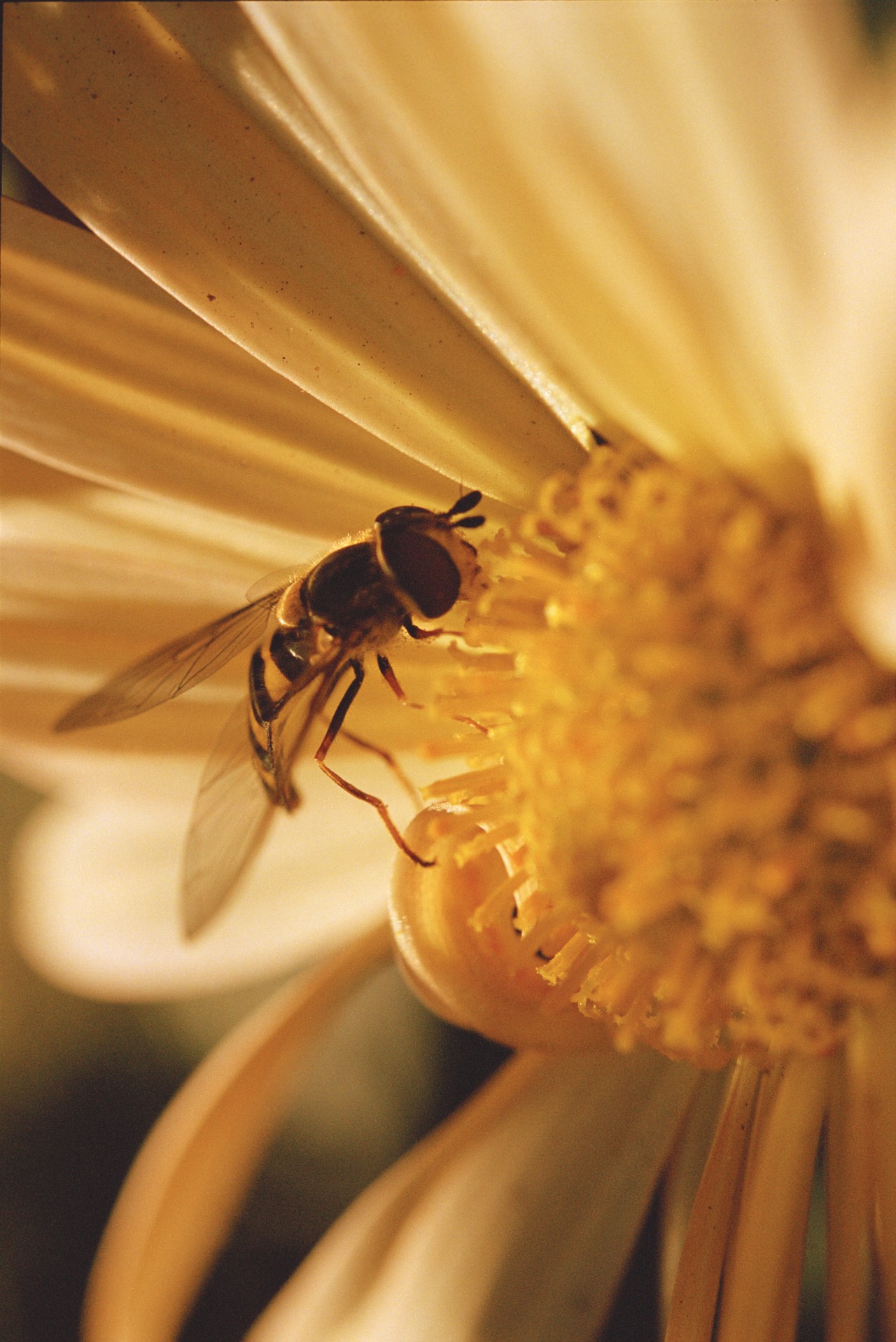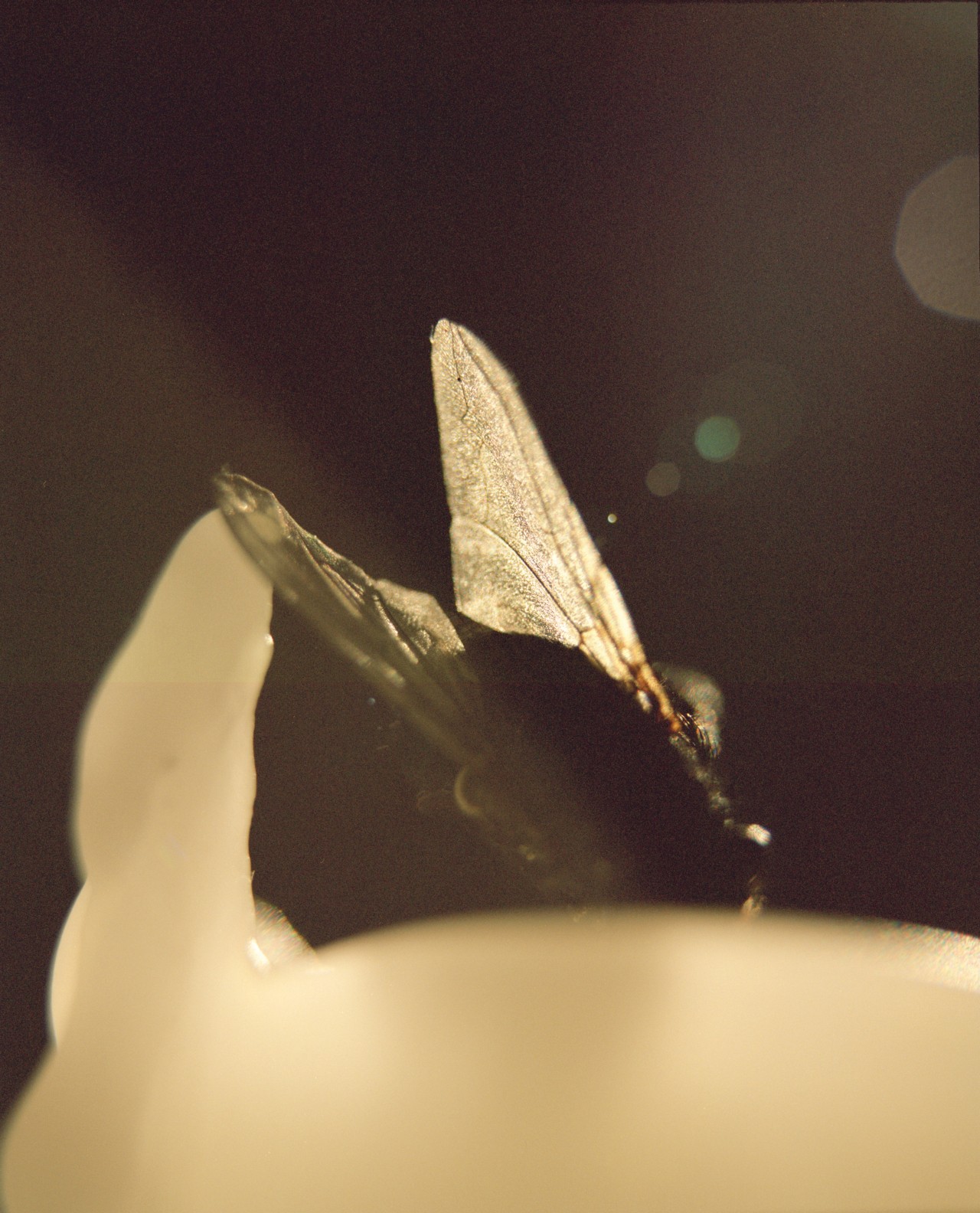

For Atmos, photographer Eric Chakeen captured a day in the life of a dipteran, from houseflies to hoverflies.
WORDS BY SUNNY NAGPAUL
photographs by eric chakeen
Ramsey McPhillips owns a 600-acre farm that has belonged to his family since 1862 in McMinnville, Oregon. Among hundreds of sheep, huge oak trees, Douglas firs, and seven miles of twisting river, McPhillips hosts an unusual kind of livestock: black soldier flies.
On his farm, thousands of flies flaunt their remarkable ability to decompose food waste, serve as a protein source themselves, and perhaps most crucially, create a byproduct that could help soil around the world hold more carbon: frass, a combination of the flies’ feces and shedded exoskeletons. Scientists and farmers consider frass, which is chock-full of nitrogen, a powerful concoction that can fertilize plants, bolster their resistance to pests, and store carbon underground to stave off global heating.
The fly-rearing farm, named Chapul Farms, provides frass to nearby businesses, vineyards, and cannabis growers. It helps the local community, and it betters the environment, too. “To really make a difference with climate change, we’ve got to show farmers big and small that this is the way to go economically,” McPhillips said. “And oh, by the way, you’re hugging a tree.”
McPhillips owns the land where Chapul Farms operates. He leases it to them for free. In addition, his property also hosts Soil Food Web School—a soil health research facility—and his own group called Tainable Labs, which helps other farmers reap the benefits of black soldier flies.
“I have this wonderful cave of scientists in my barn who are rushing to save climate change,” McPhillips said.

Resources wasted in producing, transporting, and importing discarded food in the U.S. account for as much greenhouse gas as 42 coal-fired power plants each year.
Chapul was founded in 2014, after the group’s CEO, Pat Crowley, went on Shark Tank and persuaded Mark Cuban to invest in his cricket protein bars. In 2018, Crowley shifted his focus to black soldier flies, which can address the dire needs for sustainable farming, like soil health, carbon cycles, and food waste decomposition. As the business evolved, the name did, too, turning Chapul into Chapul Farms.
Now, the group is scaling up. They recently received a USDA grant for emergency fertilizer to fund a much bigger fly farm—a $75 million facility in North Dakota—this spring. That nine-story-tall expansion will process up to 150,000 pounds of food waste, incubate 5,000 pounds of black soldier fly larvae, and produce 15,000 pounds of frass each year, according to Aly Moore, one of the company’s cofounders.
“It’s like an Amazon warehouse, but there’s trays of bugs instead of boxes,” she said.
Chapul Farms plans to build four additional facilities in the next three years and hopes to build 20 facilities by 2032, including in North Dakota, Kentucky, and Oregon.
Their network of fly farms will serve three purposes. They’ll decompose food waste that’s otherwise unusable; farm the flies as protein-rich feed for pets, livestock, and aquaculture; and harvest their frass.
The fly feed consists of waste that would otherwise be disposed of or burned, Moore said. One unexpected source, for example, is from breweries. Black soldier flies treasure the grains used during brewing, which in the U.S., would otherwise account for 85% of a beer maker’s food waste. Although typically, most spent grains are fed to livestock, the process is risky, Moore said. Because it’s wet, it can harbor mold and bacteria, and drying it is extremely expensive. Even worse, about 20% of the spent grains end up in landfills, where each ton releases over 500 kilograms of heat-trapping pollution. As an alternative, Chapul Farm is working on a privately-funded project with a Kentucky beer brewery and whiskey distillery to decompose spent grains using flies.


Chapul Farms also receives food waste from vineyards—especially the hard rinds and stems that take ages to decompose and would otherwise be sent to the landfill, McPhillips said. The possibilities are endless. And considering that resources wasted in producing, transporting, and importing discarded food in the U.S. account for as much greenhouse gas as 42 coal-fired power plants each year, not to mention the methane emitted when it rots in landfills, the potential of scrap-scavenging soldier flies might be, too.
After the flies feed, they leave behind frass, a nitrogen-rich fertilizer. In Oregon, Chapul Farms gives frass to nearby vineyards, distilleries, and farms—some of the very businesses that provided the food waste to begin with. This local production can shield the community from the vagaries of the global markets, like when Russia’s invasion of Ukraine curtailed fertilizer supply and drove up prices in 2022. “We can’t rely on importing all these things,” Moore said.
For cannabis growers like Jason Lampman, the owner of State 3 Farm, frass has come with a surprising benefit for his field: pest resistance. “It appears that putting a bunch of exoskeletons of insects stimulates the plants to invest in plant defenses,” said Brian Fisher, a biologist at the California Academy of Sciences.
Lampman’s team of cannabis and vegetable farmers has been adding frass to their fields for the last eight months. “We have seen drastic improvement in the finished product, which has brought us increased market value and greater customer satisfaction,” he said.

“The farmer and the urbanite and the scientist are all working in sync to do what’s right by the environment and to take care of our waste correctly.”
As McPhillips pointed out, the benefits for farmers are clear, and it also means that they’re “hugging a tree.” Healthy soil can hold up to 15% of human-caused carbon emissions, and frass can help store it there. “If you have living things in the soil, you’d have more [stored] carbon,” said Fisher.
Elaine Ingham, a biologist who founded the soil lab on McPhillips’s farm, added that because exoskeletons take a while to decay, they can keep carbon in the soil for quite some time. “The massive amount of skeleton keeps all of that carbon in a form that’s not going to decompose and produce carbon dioxide or methane,” she said. “It doesn’t blow off as gas.”
McPhillips lovingly calls his corner of McMinnville, Oregon “McMintopia,” because of the city’s progressive politics, cheap energy, and surrounding farms nestled in the center of wine country. Breeding flies to improve sustainable farming is his way of honoring the environmental change that is possible in his city.
“The farmer and the urbanite and the scientist are all working in sync to do what’s right by the environment and to take care of our waste correctly,” he said.
McPhillips spent nearly 30 years wondering if he would lose his family’s farm to the biggest waste management company in the country. In days past, he dreamed of opening a gardening school to teach people about food and health. Now, with three organizations laser-focused on soil health in his backyard, he’s watching a different dream unfold.
“Just as well,” he said. “This is the replacement for the school. It’s the same principles of healing the Earth.”


This $75 Million Farm Is Going To Harvest Fly Poop. Here’s Why.
